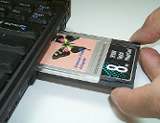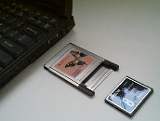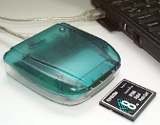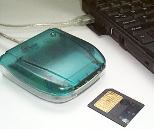| Support | Learning Center | General Imaging Info Using a Card Reader with your Digital Camera
Most of these devices are USB based and cost less than US$50. Make sure you get the type that is compatible with the type of card used in your camera. The first time you use it you will probably need to install driver software. The first time you insert your memory card your system will also need to install further drivers. This process is fairly automatic, but do not Cancel it, otherwise the card cannot be read. The card reader will appear on your computer as a new drive letter and will be called 'Removable Disc'. If you have several drives on your system it can be difficult to pick out since Zip drives and other types of removable discs are described in the same way. If you have a camera card in the reader you should be able to see a folder called DCIM at the top level.
Since almost all memory cards follow a standard called DCF they can be read in a generic way. Photo Explorer's Digital Camera Wizard can assist in moving images off the card into your computer in a reliable and convenient way. It will save you having to navigate the complicated folder structure of the memory card.
Camera manufacturers advise you not to format digital camera flash memory cards on your computer. Some cameras have trouble reading cards formatted in this way. All cameras have functions that will format and clear the cards and it is best to use them when you buy a new memory card. The problems arise because the computer selects different default sizes for disc blocks and directory sizes to the camera. Computers are much more flexible in the layouts that they can read than cameras.
|
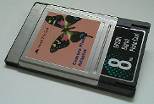 Low
cost flash memory card readers are a cheap and convenient alternative
to cables when for transferring images into your computer. They also avoid
you having to use cables or even to have the camera connected to your
PC. By using a card reader (which is powered from your PC) you can save
the camera batteries.
Low
cost flash memory card readers are a cheap and convenient alternative
to cables when for transferring images into your computer. They also avoid
you having to use cables or even to have the camera connected to your
PC. By using a card reader (which is powered from your PC) you can save
the camera batteries.